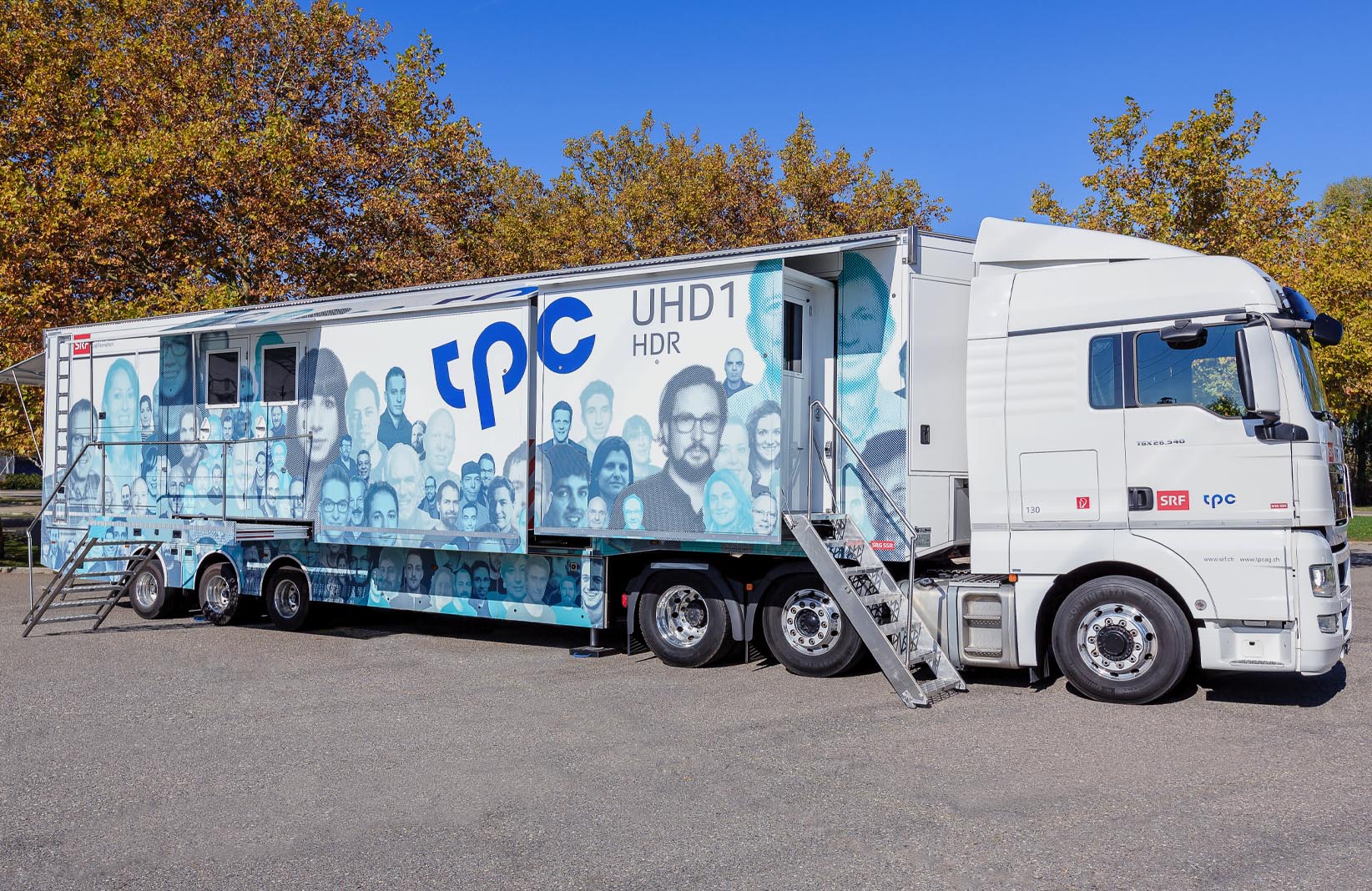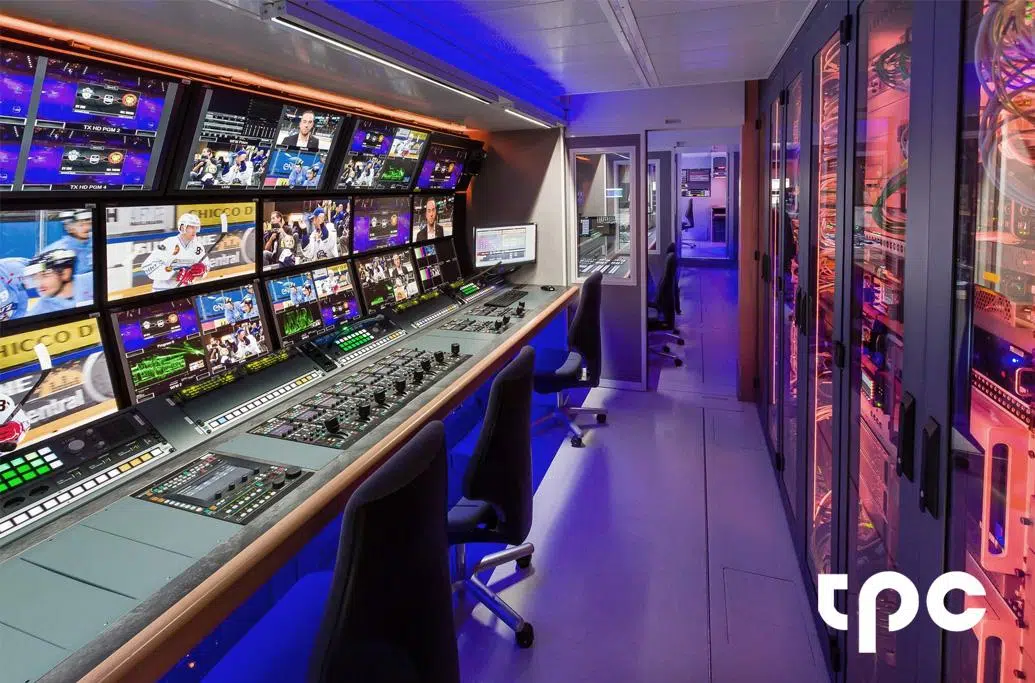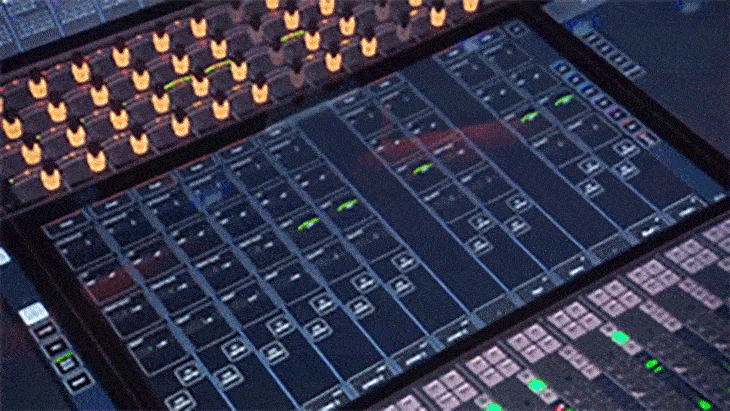The solution
A strong advocate of open standards, tpc chose to construct their new truck to support uncompressed UHD IP production using SMPTE ST 2110.
At the core of tpc’s UHD1 is Imagine’s Selenio™ Network Processor (SNP), which serves as both an SDI-to-IP gateway and low-latency, all-IP signal processing platform. It processes uncompressed UHD over IP using ST 2110, supports HD/UHD and SDR/HDR conversions, and assures optimal timing of IP signals for interoperability with all other compliant equipment in the truck. The SNP feeds into commercial off-the-shelf switches from Arista Networks using QSFP28 ports over 100GbE links.
tpc uses Imagine’s EPIC™ MV multiviewer with the SNP to monitor the signals of multiple screens, with inputs and monitor outputs all in IP. SNP makes a “proxy” signal from every UHD signal it touches, and EPIC MV uses these proxy signals — which are full-color, full-frame-rate, and typically HD resolution — rather than the UHD original, resulting in a significant reduction in overall system cost.
Connectivity of all Imagine and third-party devices, both SDI and IP, is managed by the Magellan™ SDN Orchestrator software control system, allowing tpc personnel to switch seamlessly between HD, Ultra HD and uncompressed real-time SMPTE ST 2110 streams.
The result
tpc now has a future-proof OB truck that will remain on the cutting edge of mobile production for many years to come. The flexible IP architecture is agnostic to video formats and resolutions and able to seamlessly integrate the latest compression schemes and picture-quality enhancements.
The SMPTE ST 2110 specification enables tpc to break out video, audio and auxiliary data into separate, discrete streams — boosting efficiency and flexibility over SDI-based solutions. In addition, the pure-IP approach lessens the cabling and power consumption requirements of an SDI or hybrid SDI-IP environment.
UHD1 is IP at its core and optimized for UHD — using standard or high dynamic range — but is also still capable of handling SDI-based signals. By working with uncompressed and standards-based UHD signals, tpc is able to process video signals to meet all client preferences without requiring a mezzanine compression scheme, while at the same time maximizing video quality and minimizing latency.
Most importantly, the tpc crew was able to get up to speed quickly with the next-generation technology, as it delivers the same performance characteristics and operational look and feel as a traditional SDI system, but with all the benefits of IP connectivity and software flexibility.



